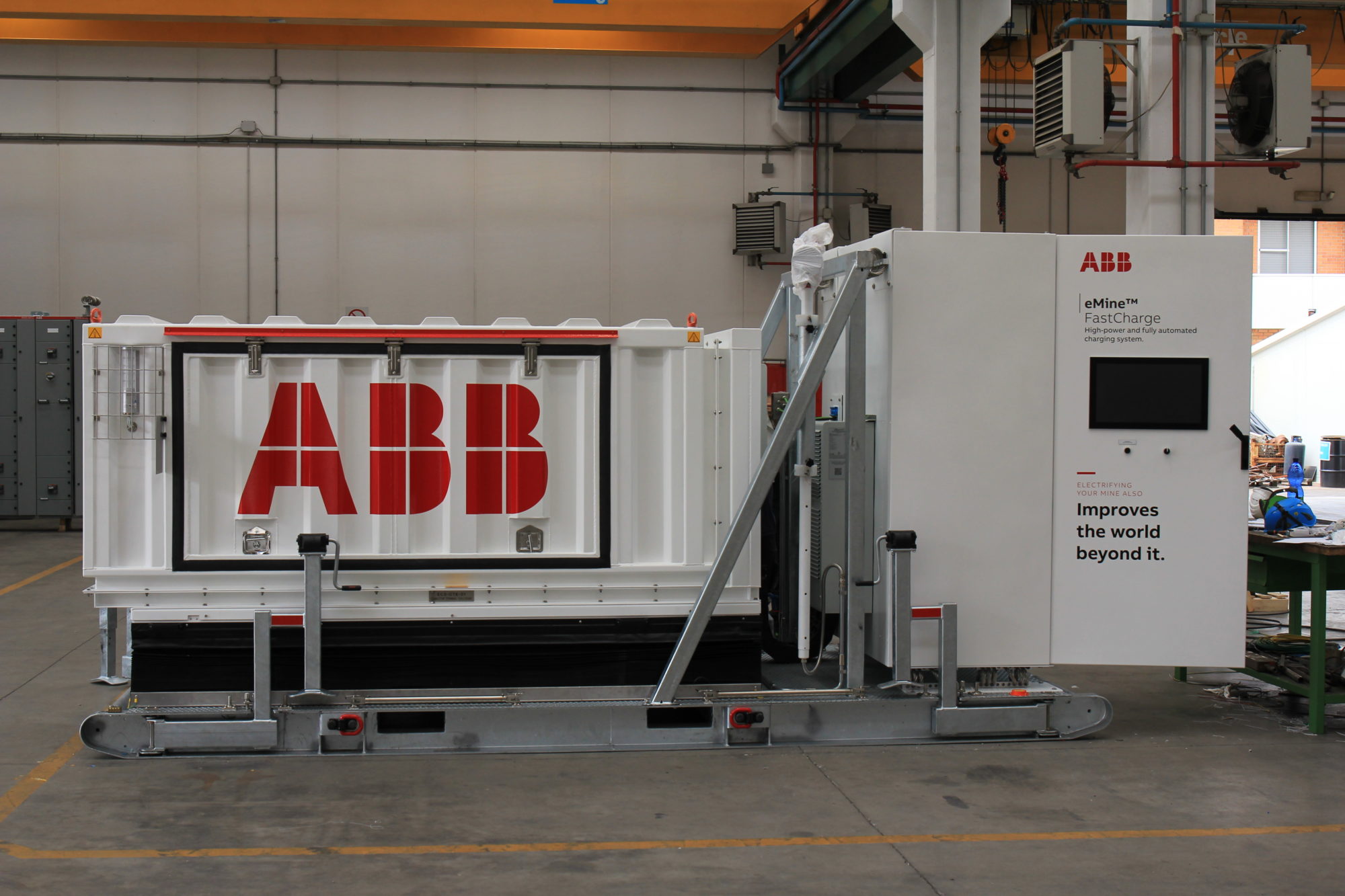ABB is working on a new fast charging solution under its eMine™ ecosystem that will represent a 10-fold increase in capacity compared with its previous 600 kW solution, Nic Beutler, Global eMine Solutions Manager, told IM this week.
Speaking on the sidelines of a trip to Boliden’s Rävliden mine in northern Sweden, Beutler said ABB is extending the capability of eMine FastCharge, explaining the previous solution it showcased in 2021 with MEDATech Engineering and Staubli would be far surpassed by this.
This 600 kW eMine FastCharge charger requires no machine operators to charge up the vehicle. Drivers station their vehicles next to the charger, the FastCharge system senses its presence and then moves the connection pin into position, inserting it into the receptacle and charging the vehicle. The solution was demonstrated on a Western Star 4900XD-e machine that MEDATech’s ALTDRIVE division had retrofitted with a battery (see below).

“What we’re working on is a more than 10-fold increase in charging power from the 600 kW fast charge solution we have previously showcased whilst keeping interoperability and flexibility in mind,” Beutler said.
“The increase in power is representative of how fast the industry has moved in these three years. Where we were once looking at charging battery vehicles in the 100-t-class and below, we’re now looking at supplying charge to vehicles with payloads of 240-280 t with a 6C charge rate.”
The news also comes on the back of Staubli announcing that it would present a charging connection device built for 7.5 MW capacity chargers at MINExpo INTERNATIONAL 2024, in Las Vegas, next month.
While Beutler couldn’t provide further specifics on the exact charging capacity and charge time, he did acknowledge the new fast charger would retain the containerised and modular nature that ABB established for the original 600 kW pilot system.
“There will be more containerised components than what we previously highlighted,” he said.
“It will require a larger footprint and some further application engineering depending on the site conditions, but the modularity element remains to also allow the integration of various manual and automated connection interfaces.”











